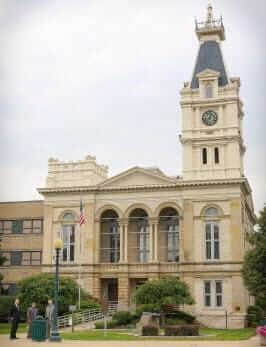
In Michigan, a “bicycle” is defined as “a device propelled by human power upon which a person may ride, having either 2 or 3 wheels in a tandem or tricycle arrangement, all which are over 14 inches in diameter.” MCL 257.4. This definition excludes devices not propelled by pedaling such as motorized bicycles or motorcycles. This is distinguished from a “vehicle” in Michigan, defined as “every device in, upon or by which any person or property is or may be transported or drawn upon a highway, except devices exclusively moved by human power…”. MCL 257.79. You do not need an operator’s license in Michigan to operate a bicycle because it is not a “vehicle”. You cannot be charged with operating while intoxicated or operating while visibly impaired on a bicycle because it is not a “motor vehicle”. Anyone can get on a bicycle and ride!
Bicycles are not limited to bike paths or sidewalks under Michigan law. Anyone can take a bicycle and ride on the same roads, streets and highways as cars and trucks. However, just because a bicycle is not considered a “vehicle” doesn’t mean that a bicyclist is immune to the rules of the road. The Michigan Vehicle Code clearly states that “[e]ach person riding a bicycle… upon a roadway has all of the rights and is subject to all of the duties applicable to the driver of a vehicle…”. MCL 257.657. This means that bicycles must go in the same direction as traffic, they must not impede the speed of traffic if a minimum speed is posted, Failing to obey these rules can subject the violator to citations from law enforcement.
Here are the most significant laws in Michigan that apply to bicycles on streets and highways:
BICYCLES MUST STAY AS FAR TO THE RIGHT-HAND EDGE OF THE ROAD AS POSSIBLE
MCL 257.660a states “[a] person operating a bicycle upon a highway or street at less than the existing speed of traffic shall ride as close as practicable to the right-hand curb or edge of the roadway except as follows:”
- “(a) When overtaking and passing another bicycle or any other vehicle proceeding in the same direction.”
- “(b) When preparing to turn left.”
- “(c) When conditions make the right-hand edge of the roadway unsafe or reasonably unusable by bicycles, including, but not limited to, surface hazards, an uneven roadway surface, drain openings, debris, parked or moving vehicles or bicycles, pedestrians, animals, or other obstacles, or if the lane is too narrow to permit a vehicle to safely overtake and pass a bicycle.”
- “(d) When operating a bicycle in a lane in which the traffic is turning right but the individual intends to go straight through the intersection.”
- “(e) When operating a bicycle upon a 1-way highway or street that has 2 or more marked traffic lanes, in which case the individual may ride as near the left-hand curb or edge of that roadway as practicable.”
This rule exists so that other motorists on the highway or street that are going the speed of traffic can safely pass the bicyclist within a sufficient distance.
NO MORE THAN TWO BICYCLES CAN RIDE ABREAST TO EACH OTHER
MCL 257.660b states “[t]wo or more individuals operating bicycles upon a highway or street shall not ride more than 2 abreast except upon a path or portion of the highway or street set aside for the use of bicycles.”
Once again, this rule is to ensure that there is sufficient distance between the bicyclist and the passing motorist that is going the speed of traffic. However, this may be further limited by local laws and ordinances. For example, the City of Monroe, Michigan has local legislation that states “[e]very person operating a bicycle upon a roadway shall ride in single file, except on paths or parts of roadways designated for the exclusive use of bicycles.” Ord. §199-3.
BICYCLES MAY BE USED ON SIDEWALKS AND PEDESTRIAN CROSSWALKS WHILE YIELDING TO PEDESTRIANS
MCL 257.660c specifically allows bicycles to be used on sidewalks or pedestrian crosswalks, but are subject to the following restrictions:
- “(1) An individual operating a bicycle upon a sidewalk or a pedestrian crosswalk shall yield the right-of-way to pedestrians and shall give an audible signal before overtaking and passing a pedestrian.”
- “(2) An individual shall not operate a bicycle upon a sidewalk or a pedestrian crosswalk if that operation is prohibited by an official traffic control device.”
- “(3) An individual lawfully operating a bicycle upon a sidewalk or a pedestrian crosswalk has all of the rights and responsibilities applicable to a pedestrian using that sidewalk or crosswalk.”
However, this right may also be restricted by local laws. For example, the City of Monroe, Michigan has local legislation that states “[n]o skateboard, roller blades, roller skates, bicycle or other such similar wheeled device shall be operated on any sidewalk or place open to the public where signs prohibit their operation.” Ord. §199-9(C).
BICYCLISTS MUST USE TURN SIGNALS ON ROADWAYS
MCL 257.648(1) states “[t]he operator of a… bicycle upon a highway, before stopping or turning from a direct line, shall first determine that the stopping or turning can be made in safety and shall give a signal as required.” Since most bicycles do not have electric turn signal lamps, the bicyclist must use hand signals to indicate to other drivers which direction they are turning.
When a person is operating a bicycle and signal is given by means of the hand and arm, the operator shall signal as follows:
- “For a left turn, the operator shall extend his or her left hand and arm horizontally.” MCL 257.648(4)(a).
- “For a right turn, the operator shall extend his or her left hand and arm upward or shall extend his or her right hand and arm horizontally.” MCL 257.648(4)(b).
- “To stop or decrease speed, the operator shall extend his or her left hand and arm downward.” MCL 257.648(4)(c).
Failing to use turn signals can make the bicyclist responsible for a civil infraction punishable by a fine. MCL 257.648(6).
BICYCLES MAY BE PARKED ON SIDEWALKS AND PARKING SPACES PROVIDED MOTOR VEHICLE AND PEDESTRIAN TRAFFIC IS NOT IMPEDED
MCL 257.660d provides for the parking of bicycles on streets, highways and sidewalks:
- “(1) An individual may park a bicycle… on a sidewalk except as prohibited by an official traffic control device (e.g. no-parking signs).”
- “(2) An individual shall not park a bicycle… on a sidewalk in such a manner that the bicycle… impedes the lawful movement of pedestrians or other traffic.”
- “(3) An individual may park a bicycle… on a highway or street at any location where parking is allowed for motor vehicles, may park at any angle to the curb or the edge of the highway, and may park abreast of another bicycle…”
- “(4) An individual shall not park a bicycle… on a highway or street in such a manner as to obstruct the movement of a legally parked motor vehicle.”
- “(5) Except as otherwise provided in this section, an individual parking a bicycle… on a highway or street shall do so in compliance with this act and any local ordinance.”
BICYCLES NOT ALLOWED ON LIMITED ACCESS HIGHWAYS
MCL 257.679a(1) states “[a] person shall not operate a… bicycle… on a limited access highway in this state. Bicycles shall be permitted on paths constructed separately from the roadway and designated for the exclusive use of bicycles.”
“Limited access highway” means “every highway, street, or roadway in respect to which owners or occupants of abutting lands and other persons have no legal right of access to or from the same except at such points only, and in such manner as may be determined by the public authority having jurisdiction over such highway, street or roadway.” MCL 257.26. These include freeways, expressways, interstate highways or other highways designed for non-stop, high speed motor vehicle traffic.
A bicyclist who uses a limited access highway is responsible for a civil infraction punishable by a fine. MCL 257.679a(2).
BICYCLIST CANNOT CARRY OBJECTS THAT PREVENTS KEEPING BOTH HANDS ON THE HANDLEBARS
MCL 257.661 states “[a] person operating a bicycle, electric personal assistive mobility device, moped, or motorcycle shall not carry any package, bundle, or article that prevents the driver from keeping both hands upon the handlebars of the vehicle.” Using a cell phone while operating a bicycle is not specifically permitted, but it may violate the law if the bicyclist must keep one hand off the handlebars to hold the cell phone to his or her ear. Any hands-free communication is not prohibited by law.
BICYCLES MUST HAVE FRONT LIGHTS AND REFLECTORS TO BE OPERATED AT NIGHT
MCL 257.662(1) states that “[a] bicycle, electric personal assistive mobility device, electric skateboard, or commercial quadricycle being operated on a roadway between 1/2 hour after sunset and 1/2 hour before sunrise shall be equipped with a lamp on the front that emits a white light visible from a distance of at least 500 feet to the front and with a red reflector on the rear that shall be visible from all distances from 100 feet to 600 feet to the rear when directly in front of lawful lower beams of head lamps on a motor vehicle. A lamp emitting a red light visible from a distance of 500 feet to the rear may be used in addition to the red reflector.”
Violating this law can make the bicyclist responsible for a civil infraction punishable by a fine. MCL 257.662(3).
Modern bicycles sold in Michigan must have reflectors on them as required by law:
- “A person shall not sell, offer for sale, or deliver for sale in this state a bicycle or a pedal for use on a bicycle, either of which was manufactured after January 1, 1976, unless it is equipped with a type of reflex reflector located on the front and rear surfaces of the pedal. The reflector elements may be either integral with the construction of the pedal or mechanically attached, but shall be sufficiently recessed from the edge of the pedal, or of the reflector housing, to prevent contact of the reflector element with a flat surface placed in contact with the edge of the pedal. The pedal reflectors shall be visible from the front and rear of the bicycle during the nighttime from a distance of 200 feet when directly exposed to the lower beam head lamps of a motor vehicle.” MCL 257.662(4).
- “A person shall not sell, offer for sale, or deliver for sale in this state a bicycle manufactured after January 1, 1976… unless it is equipped with either tires that have reflective sidewalls or with wide-angle prismatic spoke reflectors. If the bicycle… is manufactured with reflective sidewalls, the reflective portion of the sidewall shall form a continuous circle on the sidewall, and may not be removed from the tire without removal of tire material. If the bicycle is equipped with wide-angle prismatic spoke reflectors, the reflectors of the front wheel shall be essentially colorless or amber, and the reflectors on the rear wheel shall be essentially colorless or red. Reflective sidewalls or spoke reflectors shall cause the bicycle to be visible from all distances from 100 feet to 600 feet when viewed under lawful low beam motor vehicle head lamps under normal atmospheric conditions.” MCL 257.662(5).
BICYCLES MUST HAVE ADEQUATE BRAKES
MCL 257.662(2) states “[a] bicycle shall be equipped with a brake that enables the operator to make the braked wheels skid on dry, level, clean pavement.”
Violating this law can make the bicyclist responsible for a civil infraction punishable by a fine. MCL 257.662(3).
NO RIDING BICYCLES ATTACHED TO A STREET CAR OR VEHICLE
MCL 257.659 states “[a] person riding upon a bicycle, moped or motorcycle, coaster, roller skates, sled, or toy vehicle shall not attach the same or himself to a streetcar or vehicle upon a roadway.”
BICYCLES MUST HAVE A REGULAR SEAT ATTACHED
MCL 257.658(1) states “[a] person propelling a bicycle or operating a motorcycle or moped shall not ride other than upon and astride a permanent and regular seat attached to that vehicle.” A bicyclist may attach a child seat to the bicycle for use by a child, provided that the child seat is specifically manufactured and designed for use on a bicycle.
BICYCLES CANNOT CARRY MORE PEOPLE THAN DESIGNED FOR
MCL 257.658(2) states “[a] bicycle… shall not be used to carry more persons at 1 time than the number for which it is designed and equipped.”
MOTORISTS MUST ALLOW A 3-FOOT SAFE DISTANCE BEFORE PASSING VEHICLES
Effective September 27, 2018, the Michigan Legislature amended the Michigan Vehicle Code to require that motor vehicles can only pass bicyclists on streets and highways if there is a safe distance to do so:
- “The driver of a motor vehicle overtaking a bicycle proceeding in the same direction shall pass at a safe distance of at least 3 feet to the left of that bicycle or, if it is impracticable to pass the bicycle at a distance of 3 feet to the left, at a safe distance to the left of that bicycle at a safe speed, and when safely clear of the overtaken bicycle shall take up a position as near the right-hand edge of the main traveled portion of the highway as is practicable.” MCL 257.636(2).
- “The driver of a vehicle overtaking a bicycle proceeding in the same direction may overtake and pass the bicycle in a no-passing zone” provided that the 3-foot safe distance is observed. MCL 257.636(3).
A motorist who fails to observe the safe distance rule is responsible for a civil infraction punishable by a fine. MCL 257.636(4).
BICYCLISTS NOT REQUIRED TO WEAR A HELMET IN MICHIGAN
There is no law in Michigan that requires operators or passengers on a bicycle to wear a helmet. However, it is highly recommended for many common-sense reasons. A bicyclist struck by a motor vehicle is not protected by the frame of a passenger car or the security of a seat belt, meaning that he or she will be thrown some distance from the bicycle and runs the risk of a severe head injury. Wearing a helmet may just save a life!
VIOLATION OF MICHIGAN’S BICYCLE LAWS ARE PUNISHABLE AS CIVIL INFRACTIONS
Unless otherwise provided by law, a bicyclist that violates any provision of the Michigan Vehicle Code related to bicycles is responsible for a civil infraction punishable by a fine. MCL 257.656(1). However, these civil infractions do not result in any points on the offender’s Michigan driving record or any operator’s license sanctions.
A person accused of a civil infraction is not required to admit responsibility and can request a formal or informal hearing before a district court judge or magistrate. The prosecuting attorney may be able to work out a resolution with you to ease the financial penalties, including a dismissal. You are always entitled to retain the services of a skilled lawyer to assist you.
If you have any questions about Michigan’s bicycle laws, then do not hesitate to contact the experienced lawyers at Kershaw, Vititoe & Jedinak PLC for assistance today.





